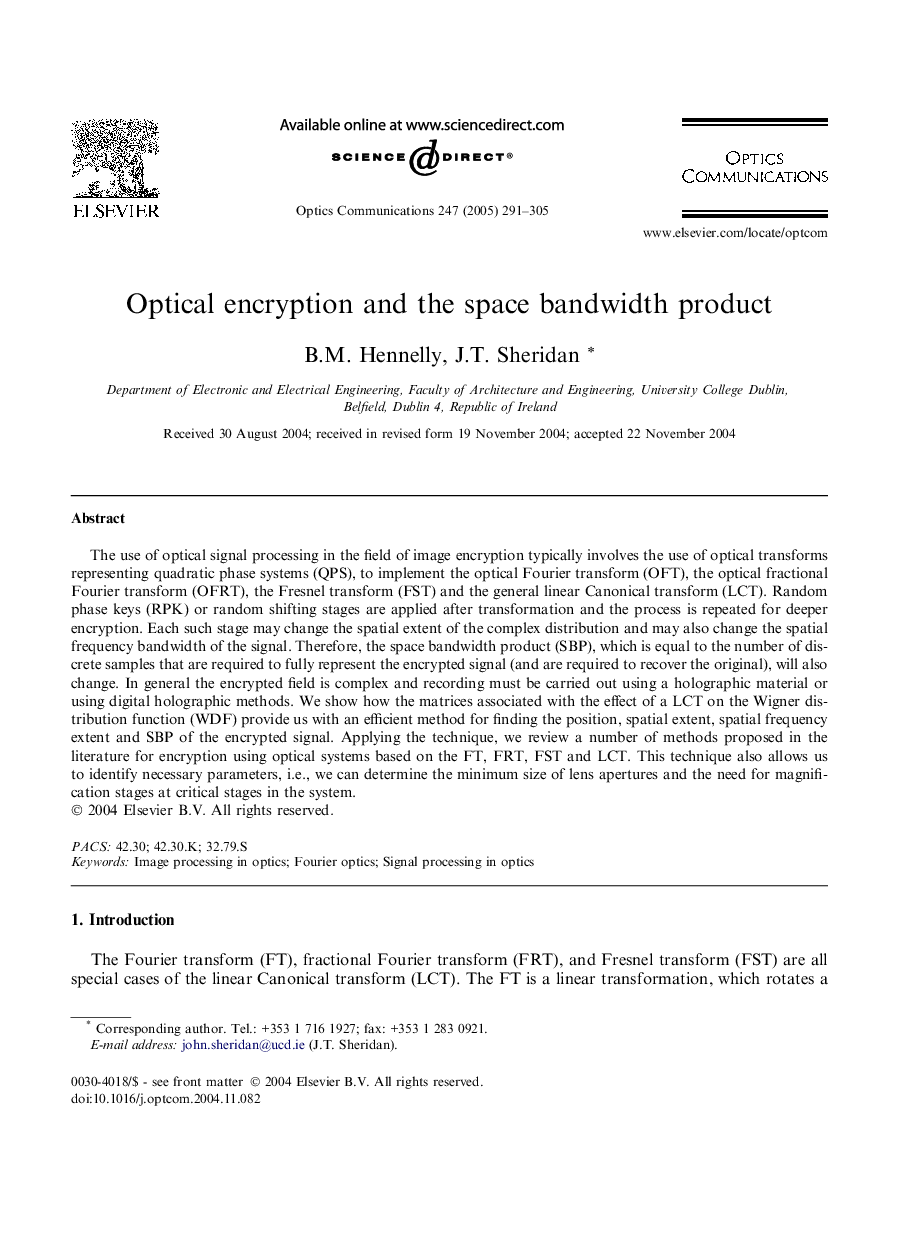| Article ID | Journal | Published Year | Pages | File Type |
|---|---|---|---|---|
| 9786016 | Optics Communications | 2005 | 15 Pages |
Abstract
The use of optical signal processing in the field of image encryption typically involves the use of optical transforms representing quadratic phase systems (QPS), to implement the optical Fourier transform (OFT), the optical fractional Fourier transform (OFRT), the Fresnel transform (FST) and the general linear Canonical transform (LCT). Random phase keys (RPK) or random shifting stages are applied after transformation and the process is repeated for deeper encryption. Each such stage may change the spatial extent of the complex distribution and may also change the spatial frequency bandwidth of the signal. Therefore, the space bandwidth product (SBP), which is equal to the number of discrete samples that are required to fully represent the encrypted signal (and are required to recover the original), will also change. In general the encrypted field is complex and recording must be carried out using a holographic material or using digital holographic methods. We show how the matrices associated with the effect of a LCT on the Wigner distribution function (WDF) provide us with an efficient method for finding the position, spatial extent, spatial frequency extent and SBP of the encrypted signal. Applying the technique, we review a number of methods proposed in the literature for encryption using optical systems based on the FT, FRT, FST and LCT. This technique also allows us to identify necessary parameters, i.e., we can determine the minimum size of lens apertures and the need for magnification stages at critical stages in the system.
Keywords
Related Topics
Physical Sciences and Engineering
Materials Science
Electronic, Optical and Magnetic Materials
Authors
B.M. Hennelly, J.T. Sheridan,
